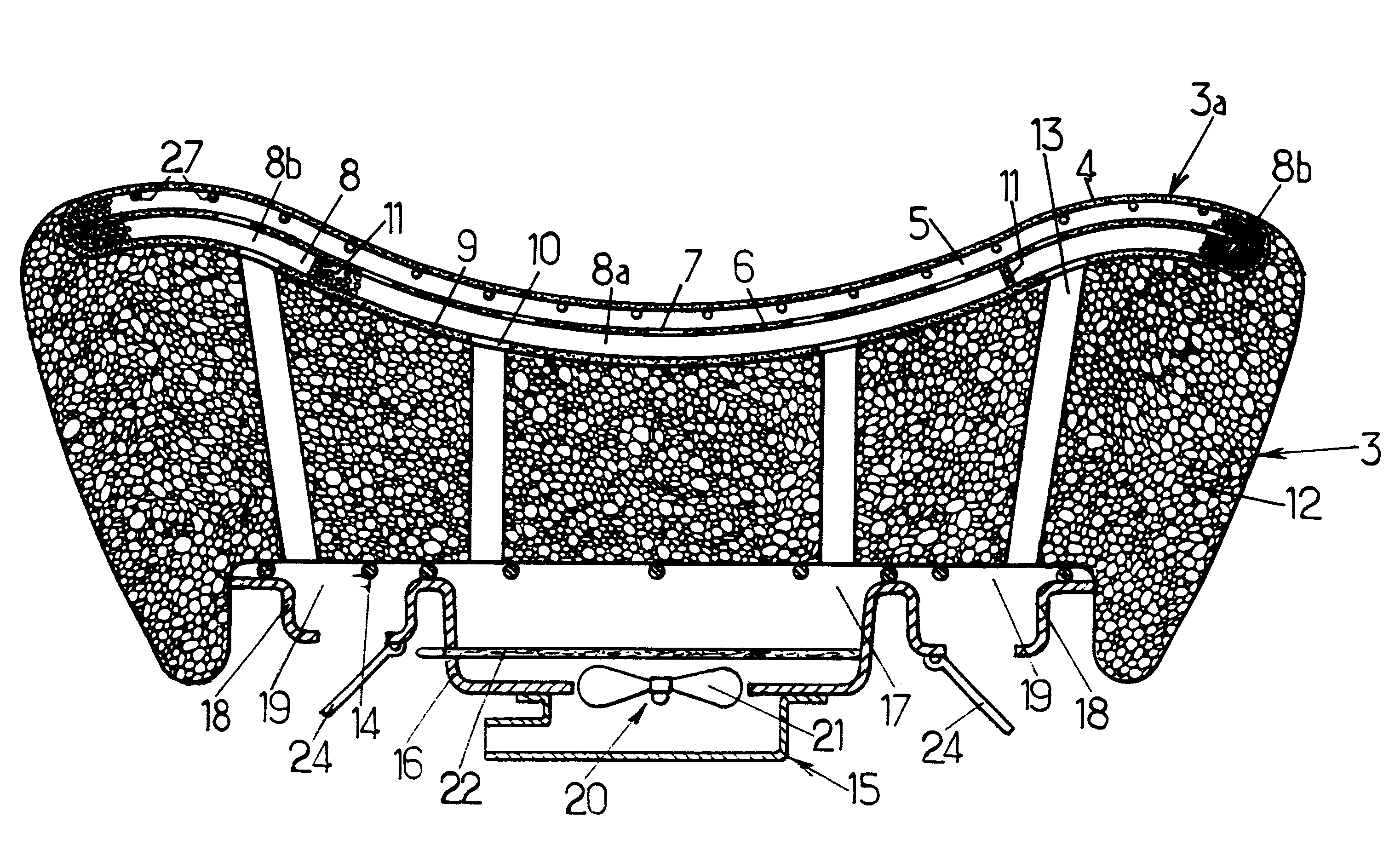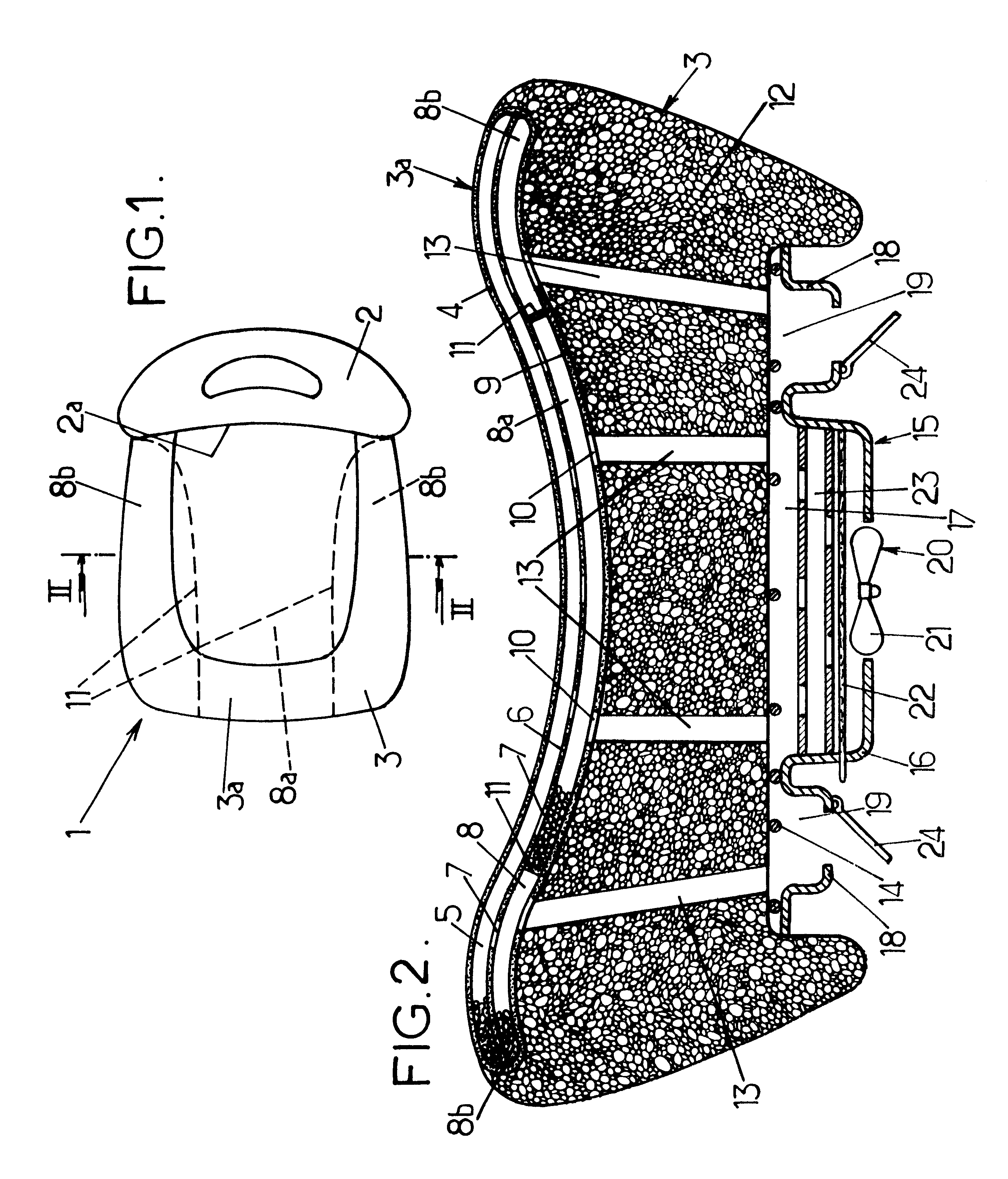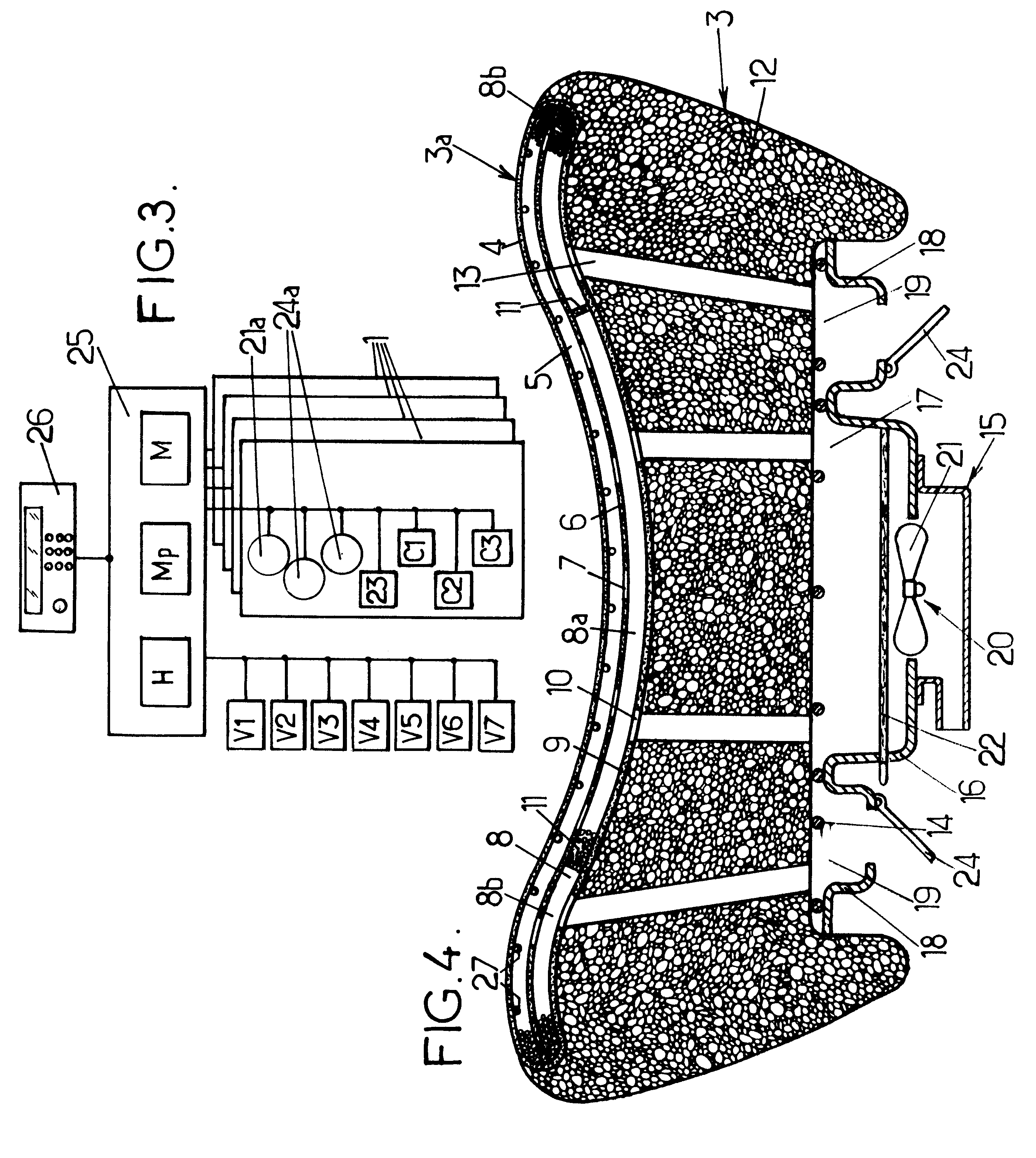Method and system of regulating heat in a vehicle seat
a technology of vehicle seats and heat regulation, which is applied in the direction of electric heating, chairs, transportation and packaging, etc., can solve the problems of unpleasant or even painful initial contact between the user and the sea
- Summary
- Abstract
- Description
- Claims
- Application Information
AI Technical Summary
Benefits of technology
Problems solved by technology
Method used
Image
Examples
first embodiment
The second embodiment of the invention, which is illustrated in FIG. 4, is similar to the first embodiment described above and will therefore not be described again in detail.
This second embodiment differs from the first embodiment due to the fact that the heat-regulating device 20 does not have a Peltier-effect thermoelectric module 23 but only a fan 21 co-operating with its filter 22 and an electric heater mat 27 controlled by the central unit 25, this electric heater mat being arranged in the immediate vicinity of the top face 3a of the seat (a heater mat of this type may also be provided in the first embodiment of the invention as a complement to the thermoelectric module 23).
second embodiment
This second embodiment of the invention operates in a manner similar to that of the first embodiment described above, with the exception that:
in cold weather, the forced regulation mode will involve activating the heater mat, preferably to a temperature in excess of 50 or 60.degree. C.,
and in warm weather, the heat-regulating device 20 will only be capable of blowing the ambient air of the vehicle into the interior of the seat 3.
Advantageously, in this case, if the vehicle has an air-conditioning system, it will be possible to make use of the presence of fresh air in the vehicle when it is at a standstill, in which case the heat-regulating device can be operated in forced regulation mode by closing the flaps 24 and creating a pulsed air flow to the interior of the seat 3 by means of the fan 21.
This particular mode of forced regulation is activated if:
the sensor V1 detects that the doors have been locked following a period in which the vehicle was operating and in a state in which sa...
PUM
 Login to View More
Login to View More Abstract
Description
Claims
Application Information
 Login to View More
Login to View More - R&D
- Intellectual Property
- Life Sciences
- Materials
- Tech Scout
- Unparalleled Data Quality
- Higher Quality Content
- 60% Fewer Hallucinations
Browse by: Latest US Patents, China's latest patents, Technical Efficacy Thesaurus, Application Domain, Technology Topic, Popular Technical Reports.
© 2025 PatSnap. All rights reserved.Legal|Privacy policy|Modern Slavery Act Transparency Statement|Sitemap|About US| Contact US: help@patsnap.com



